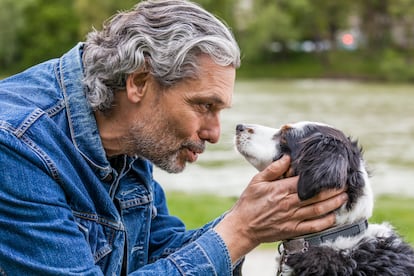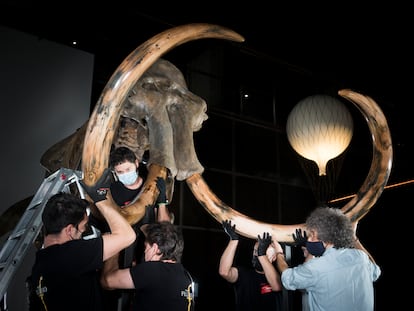Interpreting animal language: How do pets communicate?
Humans use verbal information as well as gestures and facial expressions, while animals rely more on visual, auditory and olfactory cues

Animals communicate like us, but they use a different language. People rely mostly but not exclusively on verbal language; we also use gestures and facial expression. Animals fundamentally use visual communication, which includes body posture and facial expression, as well as auditory communication that includes vocal sounds such as barking. They also relay information through smell.
Depending on the species, one form of communication will take precedence over the rest. With dogs, for instance, what’s really important is body posture, visual cues, facial expressions and vocal communication. Dogs use a ritualized language made up of various body postures. Two examples are the offensive position (the body is upright, the tail up, ears forward) and the defensive position (the body is lowered, the ears back, the tail low). This could be accompanied by vocal and facial expressions. Scent is also important: when a dog leaves a urine mark, it is leaving a message for other dogs.
This type of smell-based communication is even more important in cats. These are solitary animals, which means they have not had to develop the same kind of language as a dog, which is a social animal. Cats have developed a scent-based language to avoid direct confrontation, and they leave marks with their claws, rub their bodies on objects and leave urine marks. These are all messages for other cats, such as “I am a female and I am in heat” or “this is my territory, do not approach.”
It is clear that animal communication is not as rich as human language, but animals still manage to communicate a lot more than we are often aware of. And even if their messages are more primitive, they work perfectly. Animals have all the tools they need to get their messages across. The only problems might arise during the so-called socialization period, which in the case of dogs is between three weeks and three months of life. This is a time in their lives when they need to be around other dogs or else they might not learn dog language properly, and later in life they could have trouble understanding canine language, which could lead to misunderstandings and fights.
As for other animals, including those that are not kept as pets, communication is very similar. Depending on each species, they will rely more on one type of language over another, but they all communicate. In general terms, social species will rely more on visual language – posture, facial expression, vocalization – while less social species may depend more on smell.
Tu suscripción se está usando en otro dispositivo
¿Quieres añadir otro usuario a tu suscripción?
Si continúas leyendo en este dispositivo, no se podrá leer en el otro.
FlechaTu suscripción se está usando en otro dispositivo y solo puedes acceder a EL PAÍS desde un dispositivo a la vez.
Si quieres compartir tu cuenta, cambia tu suscripción a la modalidad Premium, así podrás añadir otro usuario. Cada uno accederá con su propia cuenta de email, lo que os permitirá personalizar vuestra experiencia en EL PAÍS.
¿Tienes una suscripción de empresa? Accede aquí para contratar más cuentas.
En el caso de no saber quién está usando tu cuenta, te recomendamos cambiar tu contraseña aquí.
Si decides continuar compartiendo tu cuenta, este mensaje se mostrará en tu dispositivo y en el de la otra persona que está usando tu cuenta de forma indefinida, afectando a tu experiencia de lectura. Puedes consultar aquí los términos y condiciones de la suscripción digital.
More information
Últimas noticias
Most viewed
- Reinhard Genzel, Nobel laureate in physics: ‘One-minute videos will never give you the truth’
- Oona Chaplin: ‘I told James Cameron that I was living in a treehouse and starting a permaculture project with a friend’
- Pablo Escobar’s hippos: A serious environmental problem, 40 years on
- Why we lost the habit of sleeping in two segments and how that changed our sense of time
- Chevy Chase, the beloved comedian who was a monster off camera: ‘Not everyone hated him, just the people who’ve worked with him’










































